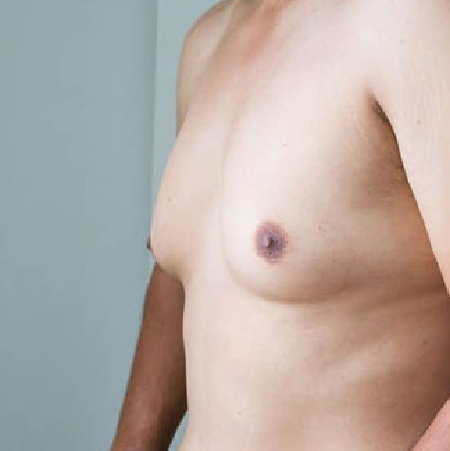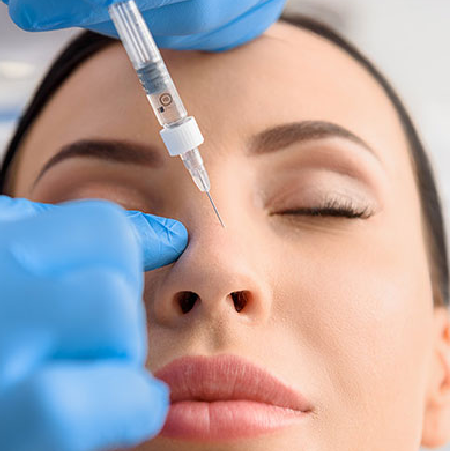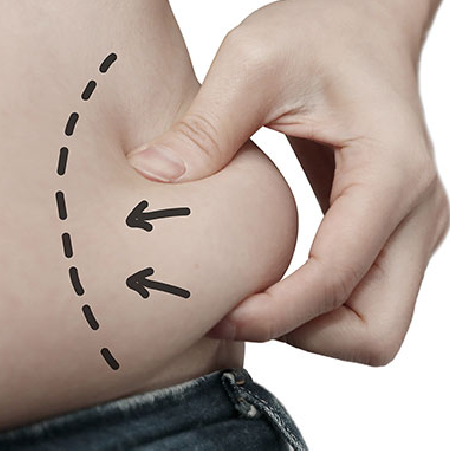Types of breast surgery for cancer

Surgery of various kinds is performed on the breasts to breast surgery for treat cancer. The stage and location of the malignancy, the size of the tumor, and the patient’s general condition all play a role in determining the optimal surgical strategy. Some common breast cancer procedures include:
Lumpectomy:
A lumpectomy is a type of breast-conserving surgery in which the malignant tumor and some of the healthy tissue around it are removed. Complete tumor removal is sought; however, breast preservation is a priority. Radiation treatment is commonly prescribed after a lumpectomy to kill any lingering cancer cells.
The surgical removal of both breasts is known as a mastectomy. Among the many variations of the mastectomy procedure are:
Complete removal of the breast, including the areola and nipple but not the lymph nodes, is what is meant by “total” or “simple” mastectomy.
The nipple, areola, and all breast tissue are removed during a modified radical mastectomy, as are certain lymph nodes from beneath the arm.
In a radical mastectomy, which is now extremely uncommon, the patient’s breast tissue, nipple, areola, chest muscles, and axillary lymph nodes are all removed. Treatment of cancer that has progressed to the chest muscles is normally reserved for more advanced instances.
Along with a lumpectomy or mastectomy, a sentinel lymph node biopsy may be done to check for cancer spreading to surrounding lymph nodes. During this procedure, the first lymph nodes that a cancerous tumor is likely to spread to are surgically removed and examined. Continuing lymph node removal may not be necessary if the sentinel nodes test negative for malignancy.
Axillary lymph node dissection:
This procedure is used when cancer has been detected in the sentinel lymph nodes or when it is thought that the malignancy has moved to the lymph nodes in the armpit. As part of a procedure to detect the spread of cancer, numerous lymph nodes in the armpit area may be removed.
Breast reconstruction surgery can be performed at the same time as the initial breast cancer surgery or at a later date. After a mastectomy, reconstruction can restore the breast’s size, shape, and appearance. The decision to undergo breast surgery, whether with implants or the patient’s own tissue (often taken from the abdomen for flap reconstruction), is complex. It should be thoroughly discussed with the healthcare team, including surgeons and oncologists. They may tailor their advice to each client by taking into account their unique requirements and preferences.
Choosing between breast-conserving surgery or mastectomy
It’s important to talk it over with your surgeon and oncologist before deciding between breast-conserving surgery (lumpectomy) and mastectomy for breast cancer therapy. Several considerations should go into this choice. Some essential considerations are as follows:
Cancer Manifestations:
Surgical options for breast cancer depend heavily on the disease’s stage, size, location, and other unique factors. A lumpectomy can be performed on patients with stage 0 to stage II breast cancer, but a mastectomy is often reserved for bigger tumors or later stages of the disease.
An essential factor to think about is the proportion of tumor size to breast size. In a lumpectomy, the tumor is removed and the breast is kept in its natural form. A mastectomy may be advised if the tumor is very large.
The goal of a lumpectomy is to save the patient’s breast, which can lead to improved self-esteem and a more natural look. The breast tissue is surgically removed in a mastectomy. When deciding this, it’s important to consider factors like how it will make you feel emotionally and physically.
Overall survival and recurrence rates are comparable between lumpectomy and mastectomy when both are accompanied by suitable adjuvant therapies (such as radiation therapy, chemotherapy, and hormone therapy). Lumpectomy may increase the chance of local recurrence; however, this can be mitigated with radiation treatment.
Irradiation Treatment Necessity After a lumpectomy, the patient may have radiation therapy to destroy any residual cancerous breast tissue. Mastectomy may be advised in place of radiation therapy if the latter is deemed ineffective for any reason (such as past radiation exposure or certain medical problems).
Prophylactic mastectomy may be considered for women with a high risk of developing breast cancer due to genetic abnormalities, such as BRCA1 or BRCA2.
Concerns of a Personal Nature:
Think about what’s most important to you as an individual when you make this choice. Make sure your decision is appropriate for your situation by discussing your worries and objectives with your healthcare team.
Read more: breast surgery in Iran
Keep in mind that the best option for you will depend greatly on your unique circumstances. Your healthcare team will provide you with all the necessary information, guide you through the decision-making process, and explain the pros and cons of your options to help you make the best choice for your needs.
Compare the types of breast surgery
Let’s evaluate the similarities and differences between a lumpectomy, a mastectomy, and breast reconstruction as they relate to the treatment of breast cancer.
Lumpectomy, or breast-conserving surgery, is a partial mastectomy that preserves the breast by removing the tumor and a small margin of healthy tissue.
The purpose of a lumpectomy is to remove the tumor and ensure total clearing of the tumor while preserving the aesthetics of the breast.
Radiation therapy is often suggested after a lumpectomy to kill any lingering cancer cells in the breast.
When compared to a mastectomy, the risk of local recurrence is somewhat greater after a lumpectomy accompanied by radiation treatment. Overall, nevertheless, the survival rates of the two methods are comparable.
Self-Esteem and Quality of Life:
Lumpectomy is associated with improved body image preservation and a more natural-looking breast.
A mastectomy is defined as the surgical removal of one or both breasts, including the areola and nipple.
Total or simple mastectomy, modified radical mastectomy, and radical mastectomy are some of the many kinds of this procedure.
A mastectomy may be recommended for larger tumors, multiple cancers in the breast, genetic abnormalities, or prior radiation therapy. It may also be based on the patient’s preference.
Reconstructive surgery on the breasts may be immediate (done at the time of the mastectomy) or delayed (done at a later date). The purpose of reconstruction is to make the breasts look and feel normal again.
After a mastectomy, a woman may have breast reconstruction surgery to restore her natural breast form.
Implants or the patient’s tissue, most frequently obtained from the belly (flap reconstruction), are also viable options for reconstruction.
Reconstructive surgery following a mastectomy can be done at the same time as the mastectomy or at a later date, depending on the patient’s needs and choices.
Body image, self-esteem, and overall mental health are all favorably affected for many women after breast reconstruction surgery.
Things to think about while deciding on a reconstruction method include patient preferences, body type, and tissue availability.
The decision to undergo surgery depends on the patient’s preferences, the cancer type and stage, and discussions with the healthcare team. They will help determine the best surgical approach based on your unique condition and goals.
Will my breast have a feeling after breast cancer surgery?
The degree of breast sensation retained after breast cancer treatment can vary between patients and surgical procedures. Here are a few essentials to know about breast pain after a mastectomy:
Lumpectomy:
A greater chance of keeping some degree of breast feeling is associated with lumpectomy, which tries to preserve the breast. However, due to the disturbance of surrounding tissue during tumor removal, some patients may have transient or permanent alterations in feeling.
A mastectomy is a surgical procedure in which all of a patient’s breast tissue is removed. This increases the risk that you will lose some or all of your breast sensation following the treatment. This is because surgeons frequently cut or otherwise injure the nerves that supply feeling to the breast.
After a mastectomy, breast reconstruction may help patients regain some of their feeling in the affected breast. Using the patient’s tissue, reconstructive procedures like flap reconstruction can restore the breast’s natural mound and feel.
The nipple and areola complex can be saved in a nipple-sparing mastectomy, which is an option in certain instances. Nipple feeling may be preserved throughout this operation, while some sensations may be altered as a result.
It’s vital to keep in mind that women might experience widely varying rates of healing and restoration of breast feeling. Over time, some women may regain sensation, while others may experience lasting changes. Before breast reduction surgery, discuss your concerns and expectations with your surgeon regarding how your breasts will feel.. They can provide detailed advice based on your specific situation and the planned procedure.
Some women may worry about changes in breast sensation due to breast cancer therapy. However, it is important to focus on the treatment’s primary goals, such as curing the disease and improving long-term quality of life.
Will the type of breast cancer surgery I have affect how long I live?
Survivability after Types of breast cancer surgery is not proportional to the specific procedure chosen. To treat breast cancer, surgeons must first remove the tumor and, in certain situations, lymph nodes that are close to it. Cancer stage, tumor features, therapy response, and the patient all play a role in prognosis and survival time.
Breast cancer survival rates depend on surgery, adjuvant therapies such as radiation, chemotherapy, and hormonal therapy, along with individual factors. The choice between lumpectomy and mastectomy is guided by tumor size, location, disease severity, and personal preferences.
Keep in mind that breast cancer is a multifaceted illness and that individual patients’ needs must be carefully considered while determining the best course of therapy. Adjuvant therapies are typically prescribed after surgery to lessen the chance of recurrence and boost long-term survival.
Consult your healthcare team, especially your oncologist, to understand your unique prognosis and the potential impact of various treatments on survival. They will assess your specific situation and provide personalized advice and treatment options based on the latest medical research.
What other problems might I have from breast cancer surgery?
Breast cancer surgery, like any other type of surgery, carries the risk of complications. These vary based on the type of surgery and the patient’s condition. Below are some possible issues:
- Pain and Discomfort: Swelling, soreness, and pain in the operated area are common but can be managed with pain relievers. These symptoms often improve with time.
- Infection: The surgical site may develop an infection, with signs like redness, swelling, heat, pus, or increased pain. Notify your doctor if these occur.
- Fluid or Blood Accumulation: Hematomas or seromas can develop, causing discomfort, swelling, or lumps. These may require drainage or additional treatment.
- Lymphedema: Removal of lymph nodes can disrupt fluid flow, leading to swelling in the arm or hand. Treatment includes physical therapy, compression garments, and lifestyle adjustments.
- Reduced Mobility: Tightness, weakness, or limited movement in the shoulder or arm may occur. Physical therapy and exercises can restore strength and flexibility.
- Breast Shape Changes: Surgery can affect breast size, shape, and symmetry. Breast reconstruction may help address these concerns.
- Loss of Sensation: Sensation changes in the breast, chest, or surrounding areas are possible. While sensation may return over time, permanent changes can occur.
- Emotional Impact: Surgery can lead to anxiety, depression, body image concerns, or changes in sexual well-being. Counseling and support groups can help manage these effects.
Before surgery, discuss your concerns and potential risks with your doctor. They can offer personalized advice, guide your recovery, and provide support if complications arise.












